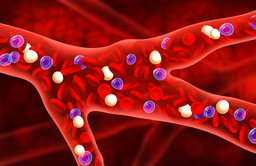Integrated Guidewire Introducer for Vascular Access Under Continuous Ultrasound Guidance
TECHNOLOGY NUMBER: 2022-306

OVERVIEW
A device to improve effectiveness and safety of gaining vascular access- Allows a single use to maintain ultrasound visualization throughout placement of lines
- The device may be adapted for use in other procedures such as chest tube placement
BACKGROUND
The ability to efficiently and safely gain vascular access is important for the administration of vasoactive agents and other life sustaining therapies for patients managed in an emergency department or a critical care unit. The Seldinger technique for obtaining central venous access was developed in the 1950's and has, with only minor modifications, remained the standard of care ever since. Limitations of the Seldinger technique include an inability to actively visualize the guidewire by ultrasound as it is advanced into the blood vessel. This blind passage technique during the transition from syringe aspiration to guidewire insertion may lead to an incorrect placement of the guidewire outside the target vessel. This error can cause procedural failure or deleterious effects such as neurovascular injury, arteriovenous fistula, or hematoma formation. Factors which increase complexity in successfully gaining vascular access include patient factors such as larger body habitus, limited mobility, and abnormal vascular anatomy.
INNOVATION
Researchers at the University of Michigan have developed a device that would serve as a single use adjunct to existing central and arterial line kits. The device accommodates the needle, guidewire, and syringe contained in procedure kits, and it provides a means for a single user to maintain ultrasound visualization during placement. The invention consolidates capabilities for aspiration and wire passage into a one-handed device that includes a pistol grip handle to improve needle control and ergonomics. A trigger mechanism allows the operator to more easily apply negative pressure to the syringe, resulting in a "flash" of blood when the vessel is accessed. A wheel mechanism allows for subsequent guidewire advancement through the body of the device and therefore directly into the targeted vessel. The invention can be managed by the practitioner's dominant hand while the ultrasound probe is held in the non-dominant hand to maintain visualization. The device assembly is then removed, leaving the guidewire in the lumen of the vessel of interest. Other embodiments of the proposed device include a custom needle, guidewire, and/or syringe. Additionally, it may be feasible to attach a pressure transducer to the device to permit the clinician to measure pressure levels in the vessel, further assessing placement in a venous versus an arterial vessel. The device may also be adapted for use in other procedures such as chest tube placement, which also relies on the Seldinger technique.
-
swap_vertical_circlemode_editInventor (7)Elizabeth DulzoMaddisen RobirdsMatthew GrzywinskiMaxwell LeeMaxwell RaithelMeredith WojewuczkiMostafa Abdel-Hamid
-
swap_vertical_circlecloud_downloadSupporting documents (1)Product brochureIntegrated Guidewire Introducer for Vascular Access Under Continuous Ultrasound Guidance.pdf